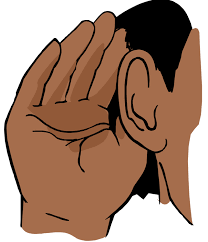AURAL TEST Grades 6, 7 & 8

What is new in Grades 6, 7 & 8?
When students take practical exams, part of the examination will include aural tests. This is the case for ALL instruments and the aural test is worth 18 marks (exams are 150 in total) Therefore, my pianists and flautists need to develop their aural skills. The tests involve listening and responding to music.
In grade 6 aural tests, the melodies that shou
In grade 7 aural tests the sing backs wi
In grade 8 aural tests
**NOTE TO PARENTS** Please check the adverts that sometimes appears on websites and YouTube, they might not be suitable for children and young people. I have no control over what adverts may appear.
How do I improve my aural skills?
I cannot stress enough how helpful it is to sing in a choir as often as you can. This will improve confidence in using the voice and learning about harmony. It is also important to listen to a wide range of music, including classical, jazz, modern so that musicians develop knowledge of styles and periods. Classic FM radio is a good place to start. It is most certainly helpful to go and see live music events, it also inspires budding musicians.
There are no short cuts and it is unwise to neglect aural skills until only the weeks before an exam. In a weekly piano or flute lesson it is not possible to cover everything in every lesson, the learner must allow time each week to work on all aspects of musicianship. This includes aural training, music theory, sight reading, technical exercises, scales in addition to pieces.
Grade 6 Aural Tests ABRSM
Please see the following link for full grade 6 aural syllabus:
https://gb.abrsm.org/en/our-exams/what-is-a-graded-music-exam/aural-tests/
6a. To sing or play from memory the upper part of a two-part phrase played twice by the examiner.
6b. To sing a melody from score, with an accompaniment played by the examiner.
6c. To identify the cadence at the end of a phrase as perfect or imperfect.
6d. (i) To answer questions about two features of a piece played by the examiner.
6d. (ii) To clap the rhythm of the notes in an extract from the same piece, and to identify whether it is in two time, three time or four time.
The following websites are helpful resources to practise the skills required in the test:
https://gb.abrsm.org/en/exam-support/preparation-for-exams/mock-aural-tests/
https://www.e-musicmaestro.com/auraltests/free/abrsm/test/grade6/6A
Test 6a: https://www.youtube.com/watch?v=shAr-Ir2Ec0&list=PLzF3tpp8DUPYKyHMeNoMJws59zPVVtCA3&index=1
Test 6B: https://www.youtube.com/watch?v=azla470hoi4&list=PLzF3tpp8DUPYKyHMeNoMJws59zPVVtCA3&index=2
Test 6C: https://www.youtube.com/watch?v=PdCUV2k14mY&list=PLzF3tpp8DUPYKyHMeNoMJws59zPVVtCA3&index=3
Test 6D:
https://www.youtube.com/watch?v=Tcy3V5d3Kbk&list=PLzF3tpp8DUPYKyHMeNoMJws59zPVVtCA3&index=4
Identifying Periods of Music: https://www.youtube.com/watch?v=6CRKm8-4R_I&list=PLzF3tpp8DUPYKyHMeNoMJws59zPVVtCA3&index=6
Recognising styles & Periods grade 5-8: https://www.youtube.com/watch?v=LbY16Cm0aNs
Grade 7 Aural Tests ABRSM
Please see the following link for full grade 7 aural syllabus:
https://gb.abrsm.org/en/our-exams/what-is-a-graded-music-exam/aural-tests/
7a. To sing or play from memory the lower part of a two-part phrase played twice by the examiner.
7b. To sing the upper part of a two-part phrase from score, with the lower part played by the examiner.
7c. (i) To identify the cadence at the end of a phrase as perfect, imperfect or interrupted.
7c. (ii) To identify the two chords forming the above cadence. Chords will be limited to the tonic, subdominant, dominant, dominant seventh or submediant.
7. (iii) To identify whether the modulation at the end of a different passage is to the dominant, subdominant or relative minor.
7d. (i) To answer questions about two features of a piece played by the examiner.
7d. (ii) To clap the rhythm of the notes in an extract from the same piece, and to identify whether it is in two time, three time, four time or 6/8 time.
The following websites are helpful resources to practise the skills required in the test:
https://gb.abrsm.org/en/exam-support/preparation-for-exams/mock-aural-tests/
https://www.e-musicmaestro.com/auraltests/free/abrsm/test/grade7/7A
Grade 8 Aural Tests ABRSM
Please see the following link for full grade 8 aural syllabus:
https://gb.abrsm.org/en/our-exams/what-is-a-graded-music-exam/aural-tests/
8a. (i) To sing or play from memory the lowest part of a three-part phrase played twice by the examiner.
8a. (ii) To identify the cadence at the end of a continuing phrase as perfect, imperfect, interrupted or plagal.
8a. (iii) To identify the three chords (including their positions) forming the above cadential progression.
8b. To sing the lower part of a two-part phrase from score, with the upper part played by the examiner.
8c. To identify whether the modulations at the end of two different passages are to the dominant, subdominant or relative minor/major.
8d. To describe the characteristic features of a piece played by the examiner.
The following websites are helpful resources to practise the skills required in the test:
https://gb.abrsm.org/en/exam-support/preparation-for-exams/mock-aural-tests/
https://www.e-musicmaestro.com/auraltests/free/abrsm/test/grade8/8A

